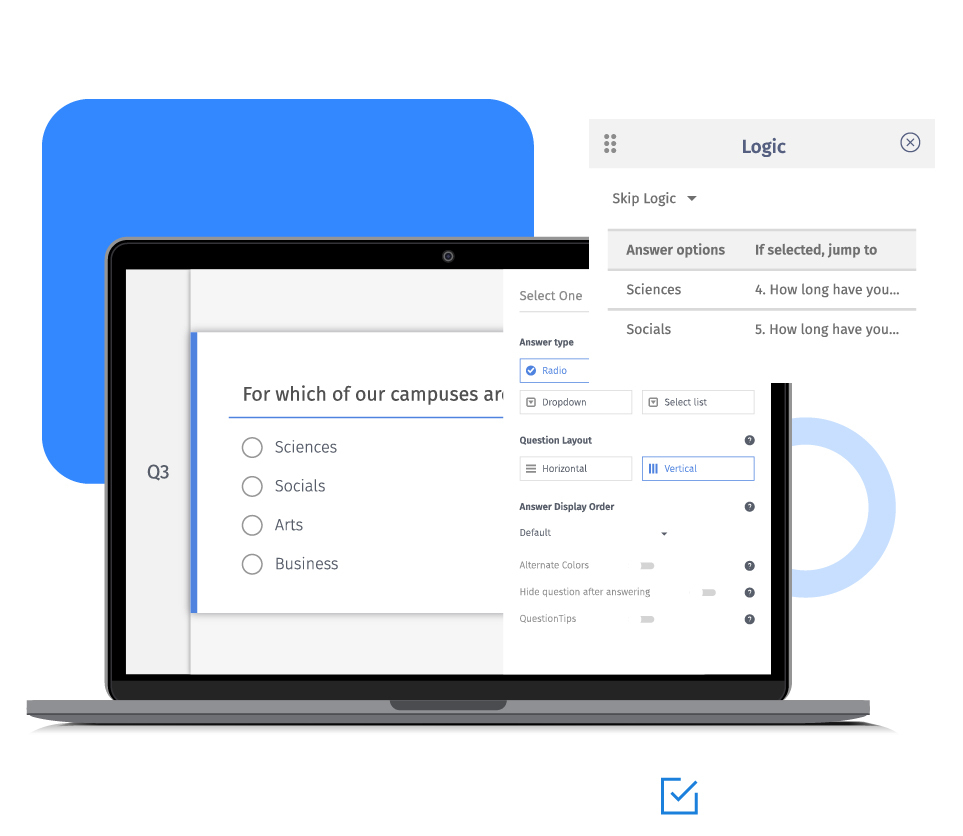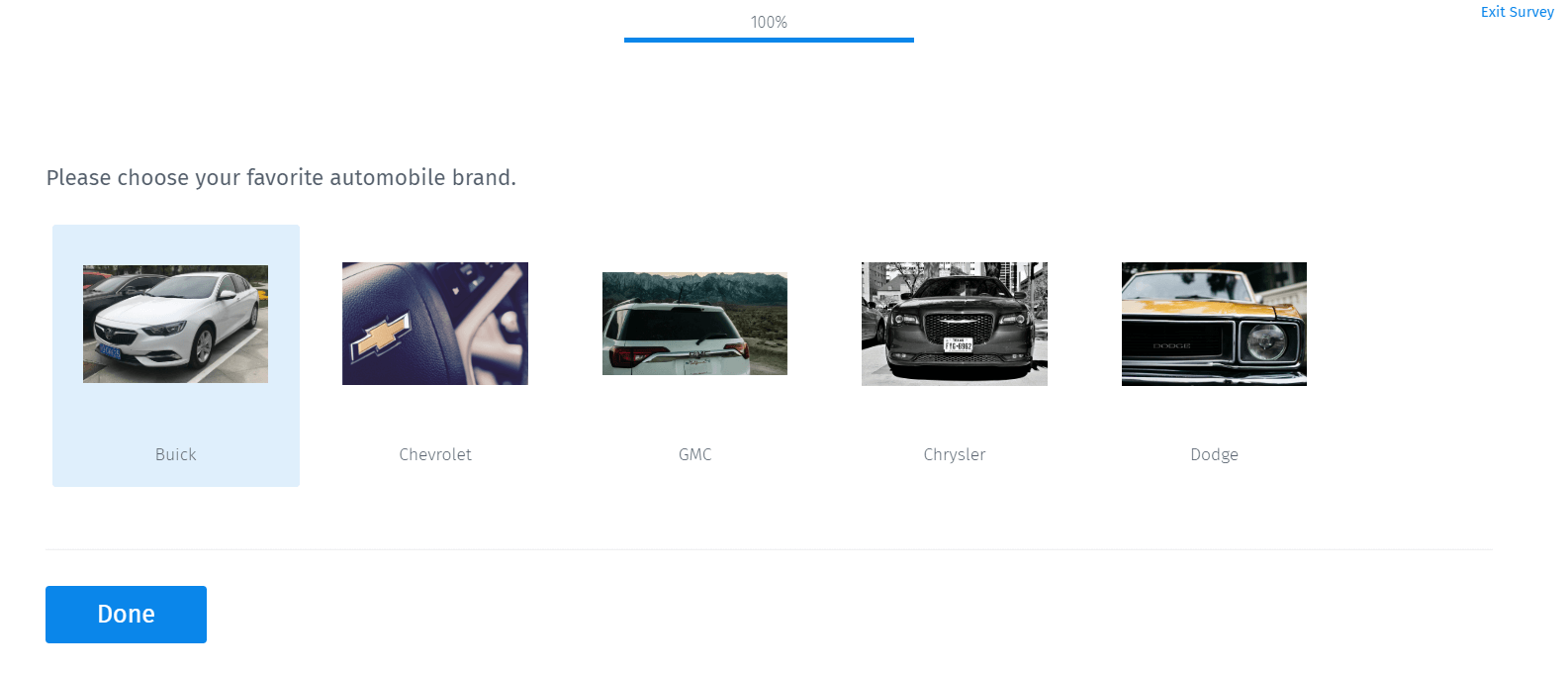It prevents order bias caused due to the tendency of respondents to choose the first option when the same order is presented to different respondents. To overcome this, researchers can present the answer options in a random order so that the respondents allocate some time to read all the options and choose an honest answer.
QuestionPro users can select the number of answers to randomize. The survey administrators can choose to randomize one option or all of them. This feature is supported by below question types:
Single-select
Multi-select
Rank order
Drag & drop
Constant sum
Example of choice randomization
Consider an automobile dealer who wants to conduct a feedback survey and ask the respondents to select their preferred automobile brand. The user can create a survey with randomized answers to display the different automobile brands, such that the respondents do not see them in the same order.

Uses of choice randomization in surveys
Concept testing: Researchers can show various designs to the participants in a different order and finalize a one that gets most chosen.
Feedback surveys: Show different products and services without any fixed sequence. Changing the order for all respondents will ensure that participants don't over-select a particular answer item.
Types of choice randomization in surveys
Randomize all choices
This type of randomization technique allows the user to randomize all the answer options in the survey.
Randomize selected choices
Advanced randomization techniques like this let survey administrators choose options that should be randomly displayed to respondents. They can also configure a survey to show a fixed number of options from a set of options without any fixed sequence.
Note: Once the respondent completes the survey, the answer options for the next respondent will be different. If the same respondent refreshes the page in the same browser window or clicks on the back button, the answer choices will not be randomized.
Advantages of choice randomization
Avoid biased data: If the respondents keep on selecting a single answer option, the survey results can be biased. Randomization of answer options prevent the bias and improve the accuracy of data collected.
Improves data quality: Randomization helps in collecting honest opinions of the survey participants.
Reduce survey bounce rate: Going through the unnecessary questions can make people bounce out of surveys. Presenting the relevant questions with the right survey flow will keep respondents engaged and improve the completion rate.
How to randomize the choices in your surveys?
Learn how to set up and use this feature with our help file on the randomization of answer options in surveys.
Survey Software Easy to use and accessible for everyone. Design, send and analyze online surveys.
Research Suite A suite of enterprise-grade research tools for market research professionals.
Customer Experience Experiences change the world. Deliver the best with our CX management software.
Employee Experience Create the best employee experience and act on real-time data from end to end.






